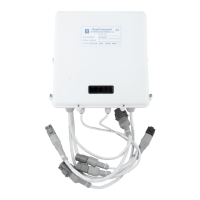9 Periodic Checks and Maintenance
The items listed below should be checked on an annual basis or less, when noted:
9.1 Control Heads
• Check the terminal strip for signs of corrosion or a loose connection.
• If used, disconnect the Deutsch connector and check the pins and sockets for signs of moisture and
corrosion.
9.2 Processor
• Check all terminal connections for signs of corrosion or loose connections.
• Un-plug and inspect all Deutsch connectors for signs of moisture or corrosion.
• While in the vicinity of the Processor, move the Station-in-Command’s lever. If the Servo’s are
excessively noisy, apply a light coating of silicone grease to the stainless steel lead screws. If there
are no Stations in close proximity to the Processor(s), use a Field Service Control Head or have
someone assist.
9.2.1 Throttle Servo Processor
• Check mechanical connections within the Processor and at the Throttle selector lever.
• Check the mechanical movement of the Throttle lever from Idle to Full. Ensure that the cable
does not bind while positioning the Throttle at Idle or Full speed.
9.2.2 Clutch Servo Processor
• Check mechanical connections within the Processor and at the Transmission selector lever.
• Check the mechanical movement of the Clutch selector lever from Neutral to Ahead, and
Neutral to Astern. Ensure that the cable does not bind while positioning the Control Head
lever at Ahead or Astern. Ensure that the Clutch selector lever and the Push-Pull cable form a
90 degree angle at Neutral.
9.2.3 Troll Integrated Servo Processor
• Check mechanical connections within the Processor and at the Troll selector levers.
• Check the mechanical movement of the Troll selector lever from Lock-up to Minimum pressure
and back to Lock-up. Ensure that the cable moves smoothly and does not bind while
positioning the Control Head lever.
9.3 Power Supply
9.3.1 Battery
The following tests should be performed in the intervals specified:
9.3.1.1 Quarterly (Every 3 Months)
• Check the level of the water (electrolyte) within the Lead-Acid batteries. The plates must be
covered. If not, add a small amount of distilled water.
WARNING: Batteries contain sulfuric acid and emit hydrogen gas while charging. Therefore, specific safety
precautions must be adhered to while handling and servicing. Specific information on handling and servicing
batteries can be obtained from the Battery Council International, Battery Service Manual.
CAUTION: In many newer batteries, the vent cap is permanently attached, preventing access to the electrolyte
for water level and specific gravity tests. Attempting to pry off these caps could result in premature battery
failure.

